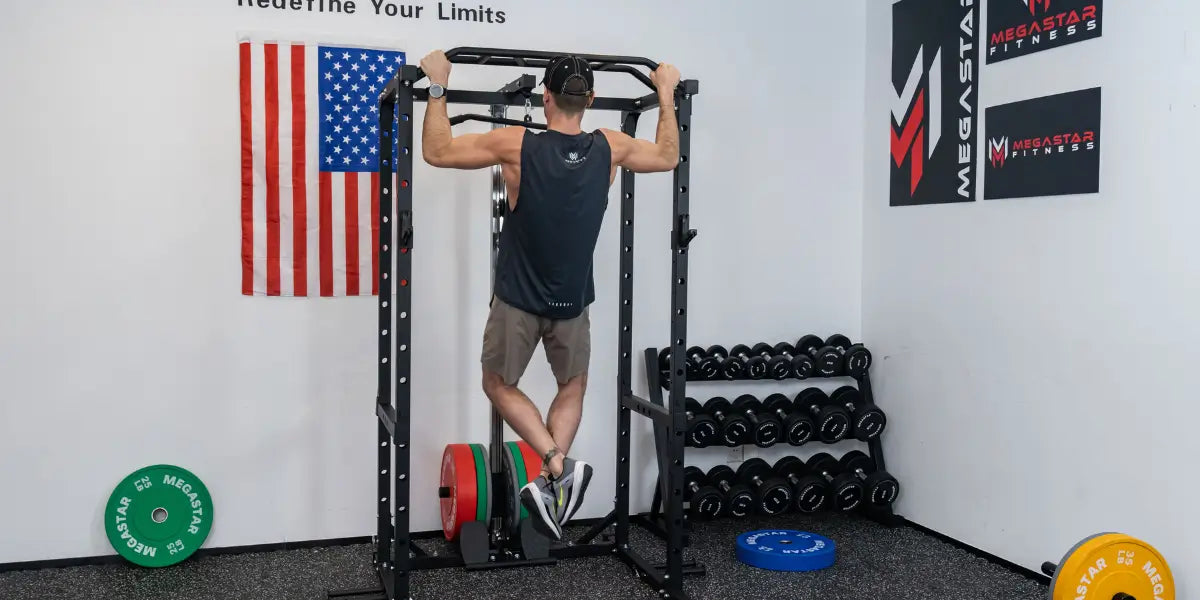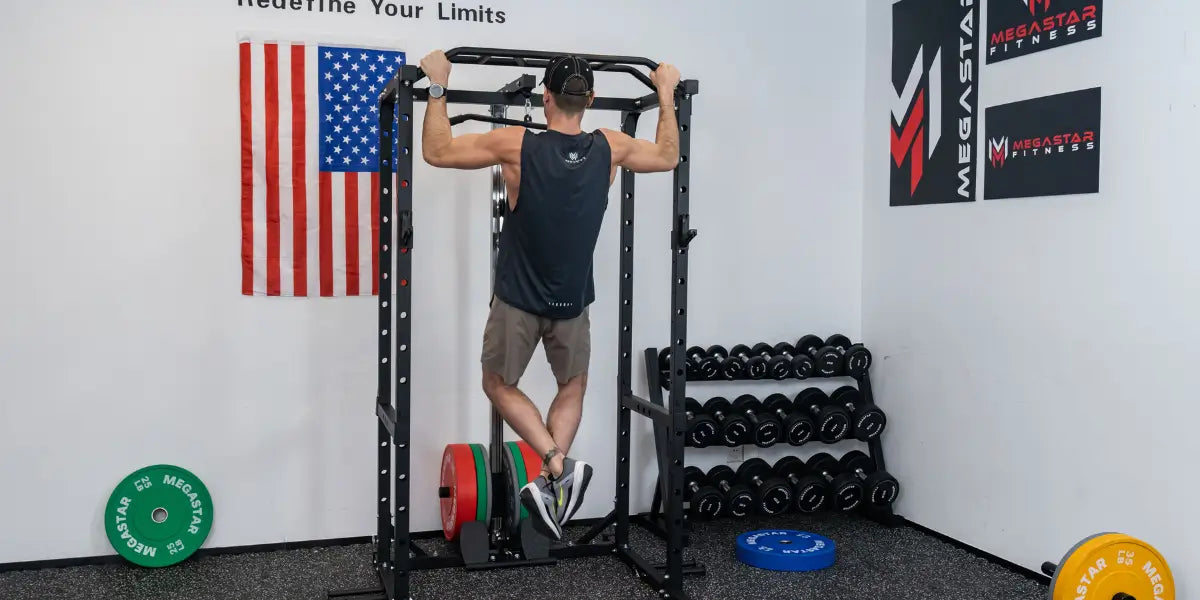The half rack suits compact home gyms, while the full rack fits spacious setups with broader training needs., understanding the key differences between half racks and full racks will help you make an informed decision. Let’s break down how each option fits into your home gym needs.
What Is a Half Rack?
A half rack is a compact and space-efficient gym essential that covers all the core lifting needs of a power rack. Designed with a smaller footprint, it’s ideal for home gyms with limited space. It typically includes adjustable J-hooks and safety arms for squats, bench presses, and more. A half rack can give you the basic features of a full rack without overwhelming your space or budget.
Key Features of a Half Rack
-
Compact Design: Great for home gyms where space is at a premium.
-
Versatility: Suitable for squats, bench presses, and other core exercises.
-
Adjustable Safety Arms: Provides safety and support, especially for those lifting alone.
What Is a Full Rack?
A full rack is a larger, more advanced piece of equipment designed to provide all the benefits of a power rack, with additional features like pull-up bars, cable systems, and more. Perfect for those looking for versatility and stability, a full rack offers greater support for heavy lifting and a wide variety of exercises. It’s an excellent choice for users looking to take their workouts to the next level.
Key Features of a Full Rack
-
Comprehensive Exercise Range: Ideal for more advanced exercises, including pull-ups, overhead presses, and other variations.
-
Enhanced Stability: Built to handle heavier loads and provide support for your workouts.
-
Attachment Options: Offers multiple attachments like pull-up bars, cable systems, and storage racks, enhancing versatility.

How to Choose the Right Rack for You?
1. Assess Your Space
When choosing between a half rack and a full rack, the most important factor is your available space. If you're limited on room, a half rack is an excellent option that allows you to get the core benefits of a power rack without sacrificing much space. If you have a more spacious gym or you plan on expanding your workout setup, a full rack offers a broader range of exercises and features.
2. Budget Considerations
For those on a tighter budget, a half rack is an affordable solution. It provides all the essential features of a full rack, such as safety arms and adjustable J-hooks, while keeping the cost lower. If your budget allows for more features, a full rack provides enhanced stability and versatility, ideal for those looking for a long-term investment in their fitness journey.
3. Fitness Goals and Workouts
Your fitness goals will play a big role in your decision. If your primary focus is strength training with squats, bench presses, and deadlifts, a half rack is more than sufficient. However, if you’re looking to incorporate exercises like pull-ups, overhead presses, and other multi-functional workouts, the full rack will offer the additional space and versatility needed to meet those goals.
Common Issues and Solutions
Limited Space for Full Rack
Many people in smaller homes or apartments face challenges with larger equipment. If you prefer the features of a full rack but have limited space, consider options like wall-mounted or foldable designs. These allow you to maximize the functionality of a full rack without sacrificing valuable floor space. MegaStar Fitness offers such designs that combine the versatility of a full rack with space-saving features.
Solo Lifting Concerns
For solo lifters, safety is a top priority. While a half rack provides adjustable spotter arms for safety, a full rack offers integrated safety bars, giving you greater peace of mind when lifting heavy weights. If you’re using a half rack and lifting alone, look for models with reinforced safety arms and supports, or consider adding accessories that enhance safety.
Understanding Adjustability
One key consideration is how adjustable your rack is. Both half racks and full racks should offer some degree of adjustability in terms of J-hooks and safety arms. Full racks generally provide more flexibility with greater options for height adjustments and attachments. If you’re planning on using the rack for multiple people or want to adjust your setup frequently, a full rack might be more appropriate.

Frequently Asked Questions
1. Can a Half Rack Handle Heavy Lifting?
Yes, a half rack can support heavy lifting, though for extreme weightlifting, a full rack with a more robust frame might be better suited. Ensure you select a half rack with a reinforced steel frame for better stability.
2. Which Rack is Better for Beginners?
A half rack is ideal for beginners, especially for those who are focusing on basic strength training exercises. It provides the necessary safety and stability for squats, presses, and deadlifts while being compact and cost-effective.
3. How Do I Know If I Have Enough Space for a Full Rack?
Measure the available space in your home gym before purchasing a full rack. Ensure that you have ample room to accommodate the rack's footprint and leave enough space around it for your workouts. If space is a concern, consider foldable or wall-mounted racks for an adaptable solution.
4. What’s the Best Rack for Solo Lifters?
For solo lifters, a full rack with integrated safety bars is the best option as it provides enhanced safety. If opting for a half rack, ensure it includes adjustable safety arms or add-on accessories to ensure your safety while lifting alone.
Conclusion: Which Rack is Right for You?
-
Half Rack: Ideal for users with limited space and budget who focus on essential exercises like squats and bench presses. It’s perfect for smaller home gyms or those just starting their fitness journey.
-
Full Rack: Suitable for users with more space and a higher budget who want a versatile, long-term solution for a wide range of exercises. It’s perfect for heavy lifters and those seeking a variety of attachment options and a more comprehensive workout setup.
By evaluating your space, budget, and fitness goals, you can select the rack that will support your journey to better health and fitness.





